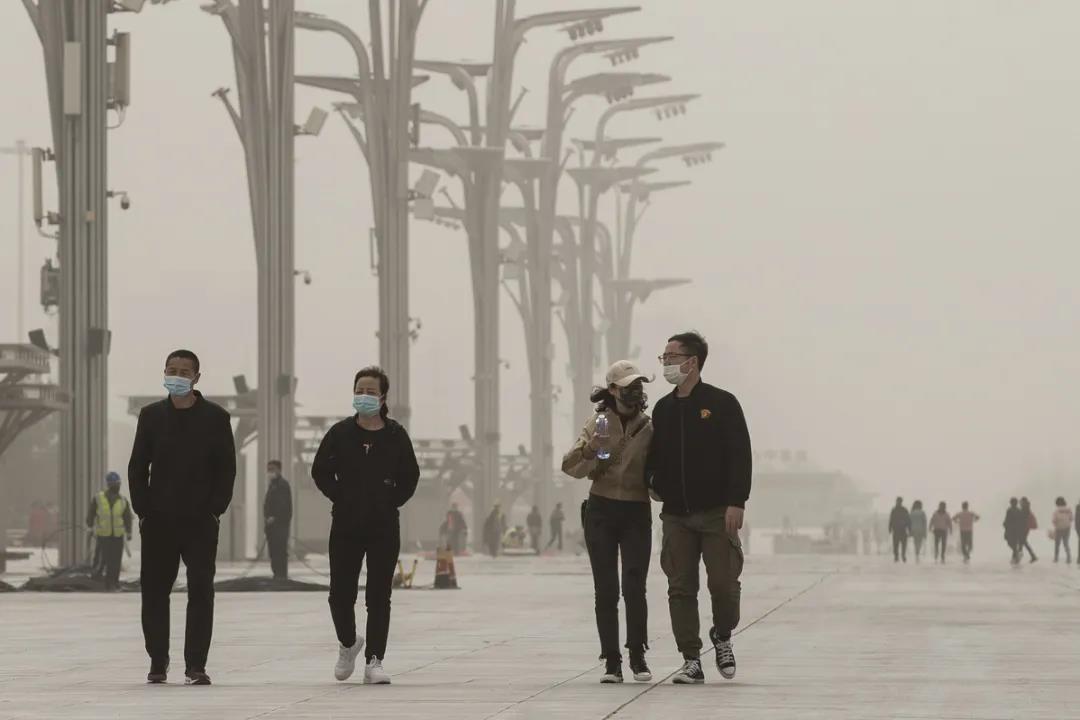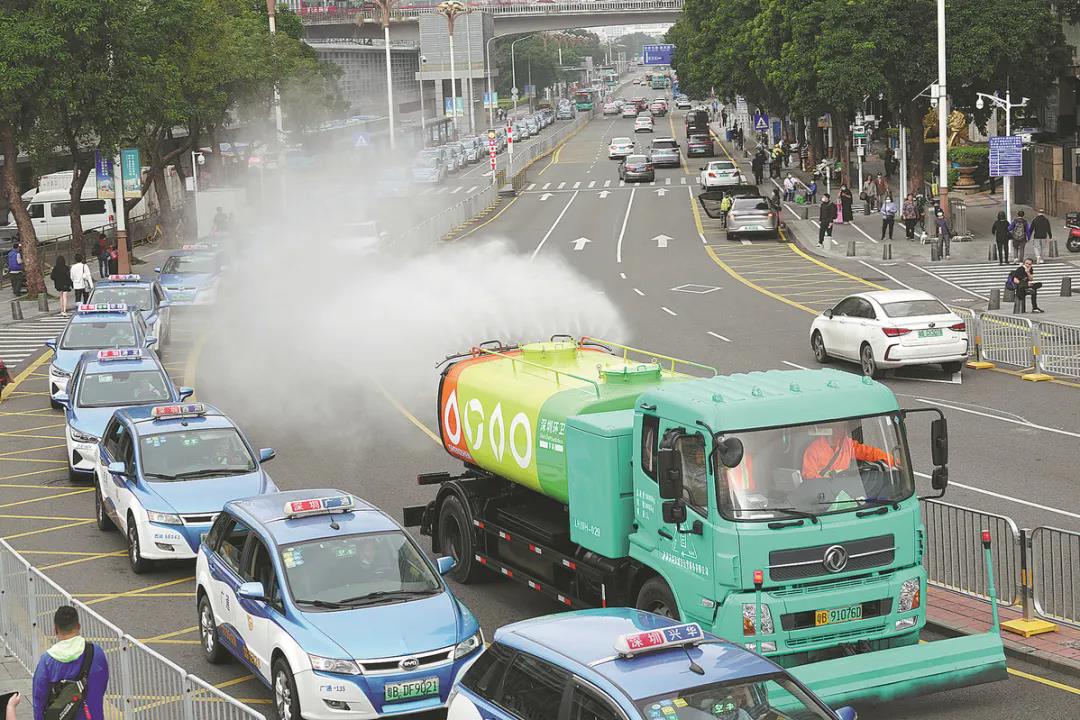After years of smog, China has started a "war" against air pollution.
[Introduction] After ten years of air pollution control in China, the air quality has been significantly improved. However, since 2023, air pollution has rebounded, which is mainly due to climate warming, more frequent sandstorms in spring, and higher operating rate of factories. The Action Plan for Continuous Improvement of Air Quality released at the end of 2023 set stricter air pollution prevention and control targets for key areas such as Beijing, Tianjin and Hebei. China’s ambitious environmental plan is a key link in implementing low-carbon transformation and sustainable development strategy.

Since China launched a nationwide campaign to improve air quality ten years ago, the effectiveness of air pollution prevention and control is obvious to all. The long-term severe smog that was common ten years ago is now less and less common. However, in the winter of 2023, smog appeared again in the northern cities, which sounded the alarm for us, indicating that the struggle against air pollution was not over, and once again reminded us that air quality directly affected public health. According to the report of China Center for Disease Control and Prevention, 1.24 million people died of air pollution in China in 2017. Therefore, it is urgent to formulate a sustainable development policy that takes into account both economic and health benefits.
In order to inject new impetus into air purification in China, in December last year, the State Council issued the Action Plan for Continuous Improvement of Air Quality, which comprehensively deployed the work of continuous improvement of air quality. It is estimated that compared with 2020, about 180,000 deaths related to PM2.5 pollution will be avoided every year by 2025. The biggest beneficiary areas include Beijing, Xi ‘an, Shaanxi and surrounding areas, and the demand for pollution prevention and control in these areas is also the strongest.
The Action Plan defines the PM2.5 concentration reduction target by 2025, and takes Beijing-Tianjin-Hebei and its surrounding areas, Fenwei Plain and Yangtze River Delta as three key areas. The intensity of reduction will vary according to the progress from 2020 to 2023. According to the air quality data released by the Ministry of Ecology and Environment from 2020 to 2023, it can be inferred that the concentration of PM2.5 in these three key areas must be reduced by 5% on the basis of the 2023 level, affecting about 520 million people and their health. At the same time, the goal of other non-key areas is to reduce 2% from the current level. According to an analysis by the Energy and Clean Air Research Center, Beijing and Xi ‘an are expected to gain the most significant health benefits, and the number of deaths caused by air pollution is expected to decrease by 92,000 and 12,000 respectively, accounting for 60% of the national death reduction.

In Beijing and its surrounding areas, the per capita medical cost caused by air pollution is expected to be greatly reduced. It is estimated that by 2025, the number of deaths per 10,000 people will be reduced by 3.3, followed by Fenwei Plain, with a decrease of 2.3. Beijing’s air quality control target is stricter, requiring the concentration of PM2.5 to be controlled within 32 μ g/m3, which will reduce the number of deaths per 10,000 people by 3.5, exceeding the national average of 1.3 deaths per 10,000 people. This shows that targeted regional policies are more effective in reducing the impact of air pollution on health.
The World Health Organization estimates that worldwide, air pollution causes 7 million premature deaths every year, which is one of the main risk factors of non-communicable diseases such as heart disease, stroke, lung cancer and acute and chronic respiratory diseases. In China, respiratory diseases rank fourth among the main causes of death, while the number of deaths caused by lung cancer ranks first among malignant tumors. Therefore, the prevention and control of air pollution is still an important measure to ensure human well-being.
The death caused by lung cancer is mainly related to air pollution, and the death rate is high in the cities and industrialized areas of China, especially in the eastern and northern regions. Since the reform and opening up, the eastern part of China has experienced a rapid urbanization process. Traffic exhaust and pollutants from industrial combustion and coal combustion have caused serious pollution. In addition, because the northern region needs long-term heating in the long winter, and coal is the main heating fuel, the pollutants emitted by coal will pose a threat to health. According to the data of China CDC, the death risk of lung cancer in northeast China is higher than that in other regions. Therefore, reducing coal use is still an important measure to prevent and control air pollution. Formulating relevant policies and making strategic investments to promote clean energy power generation and sustainable development will greatly reduce the main air pollution sources.

In the past ten years, China has made remarkable achievements in air pollution control, and the air quality has improved obviously. From 2013 to 2022, PM 2.5 The concentration decreased by 57%, and the days of severe pollution decreased by 92%. The latest research in Peking University shows that the life expectancy of China population increased by 1.94 months and 3.87 months respectively during the implementation of the Air Pollution Prevention Action Plan and the Three-year Action Plan to Win the Blue Sky Defence War. howeverDue to climate warming, sandstorms become more frequent in spring, and the operating rate of industrial enterprises increases, air pollution will rebound in 2023.In order to cope with this new situation, the Action Plan for Continuous Improvement of Air Quality came into being.
In addition to the new national action plan, 18 departments, including the Ministry of Ecology and Environment, jointly issued the Plan for Comprehensive Control of Air Pollution in Autumn and Winter of 2023-2024 in Beijing-Tianjin-Hebei and Surrounding Areas and Fenwei Plain last year, which set control targets for PM2.5 concentration and days of severe and above pollution in relevant cities in October-December 2023 and January-March 2024. In January, 2024, the State Council issued the Opinions on Comprehensively Promoting the Construction of Beautiful China, which further determined the medium-term pollution control goal by 2027 and the long-term goal by 2035, and reduced the concentration of PM2.5 to 28 μ g/m3 and 25 μ g/m3, respectively, which was lower than 29 μ g/m3 in 2022.
China is actively implementing an ambitious plan, which requires continuous policy promotion and practical actions.Achieving cleaner air quality is not only an urgent need related to people’s health, but also a key link for China to implement the strategy of low-carbon development and sustainable development and strike a balance among environmental demand, economic growth and public welfare.

The original text of this article was published in the international edition of China Daily with the original title of "Breathe the Easy".
Produced by: China Daily China Observation Think Tank
Editor: Song Ping Xia Liu
Editor: Zhao Zhang
Intern Cheng Piao Piao and Li Jingwei also contributed.